- Home
- Military & Defense
- 50 years ago, Vietnamese forces launched the Tet Offensive and changed how America saw the Vietnam War
50 years ago, Vietnamese forces launched the Tet Offensive and changed how America saw the Vietnam War
Before January of 1968, the war was mostly confined to the countryside. The Communists would take the war right into Vietnam's major towns and cities.

Equipment from the Ho Chi Minh Trail was stored in underground tunnels and bunkers like this one, before being smuggled into South Vietnam's cities.
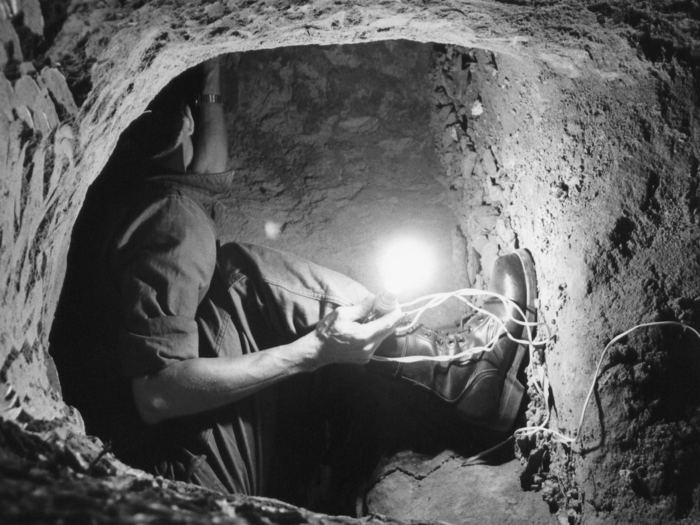
The NVA and VC had moved hundreds of tons of weapons, ammunition, and supplies through the Ho Chi Minh Trail into South Vietnam.
The trail started in North Vietnam, went through Laos and Cambodia, and had numerous entrances all along South Vietnam's border with Cambodia.
One of the first targets the VC and NVA attacked was Saigon, the capital of South Vietnam.
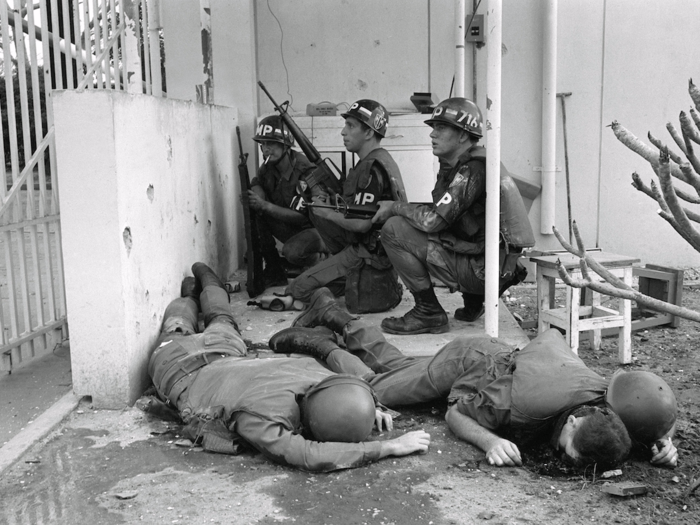
An attack on the capital city of Saigon was an extremely bold move that proved the VC and NVA were not "losing" the war.
The VC and NVA attacked General William Westmoreland's headquarters, the Presidential Palace, and the American Embassy.
The attack on the US Embassy in particular sent shockwaves across the US.
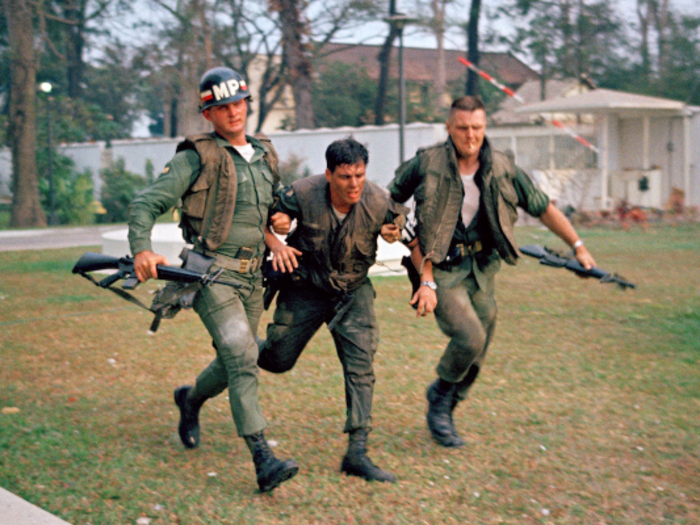
A VC squad blew a hole in the wall around the embassy compound and poured inside.
The embassy attack was especially significant. It showed that the US, despite having hundreds of thousands of soldiers in the country, was not even able to defend one of the most important American buildings in the heart of the capital city of a allied nation.
The embassy attack was repelled quickly, as Marines and MPs struck back.
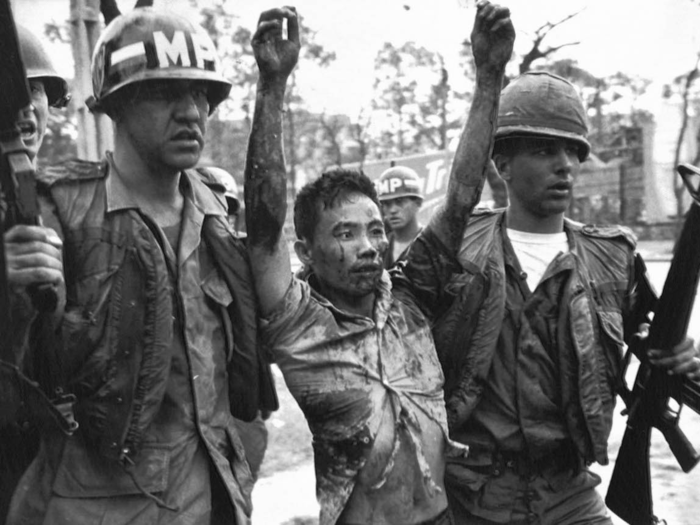
The attack at the embassy was controlled within six hours. But the images of VC guerrillas inside the American Embassy already had an affect on the American public.
Elsewhere in Saigon, the fighting continued, especially near the Presidential Palace.
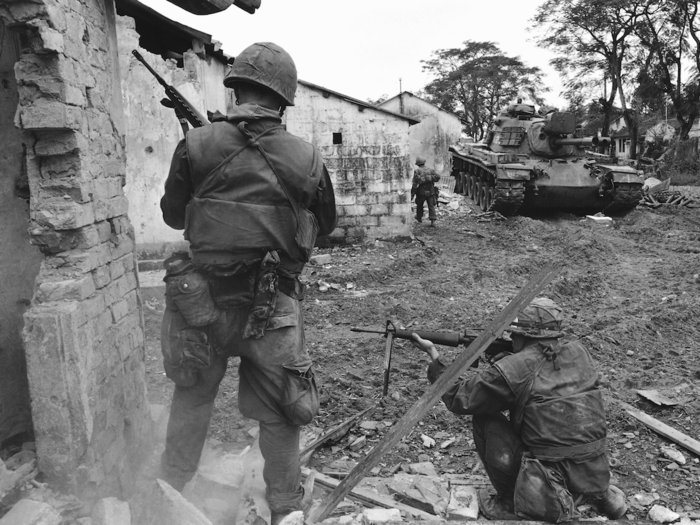
The racetrack, which was seized by the VC in the early hours, was liberated and used as a staging ground and artillery base by US and ARVN forces.
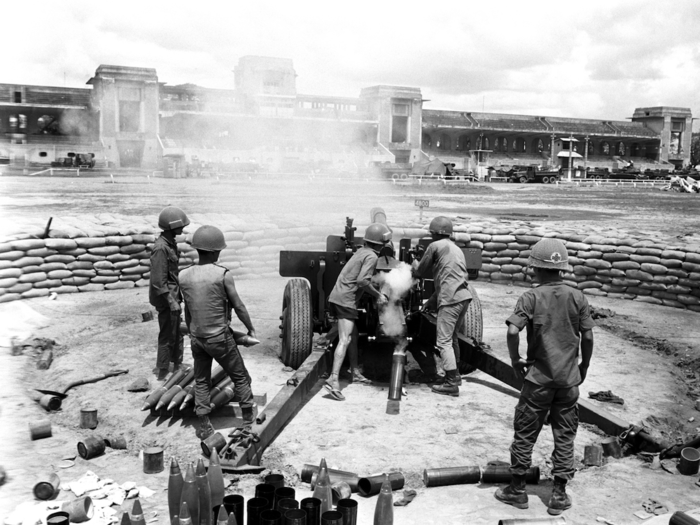
As the offensive commenced, the ancient imperial city of Hue was attacked as well, sparking another brutal urban battle.
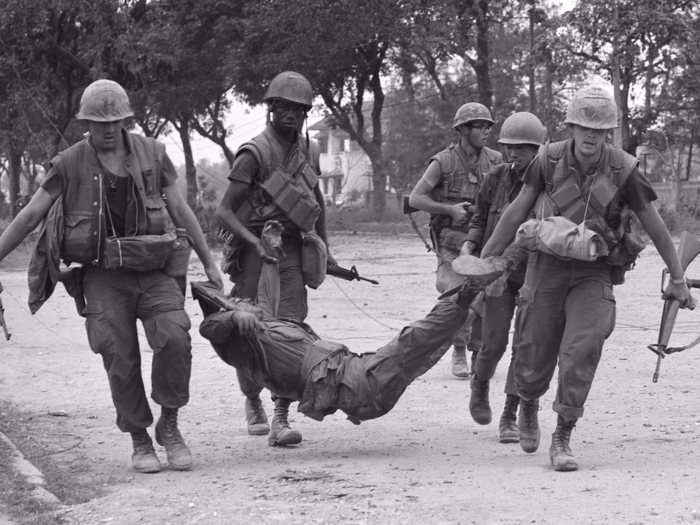
Hue was an extremely important symbol in Vietnam. It was the ancient imperial capital, and a center for learning religion, and culture.
The VC and NVA set out to destroy the South Vietnamese elite in Hue. They rounded up as many as 5,000 people who disappeared. After the battle, at least 3,000 bodies were found in mass graves. The victims had been shot, beaten, and burned to death, and some were buried alive.
The urban combat of the Tet Offensive was not something that the US or ARVN had trained for. As a result, battles were long and hard.
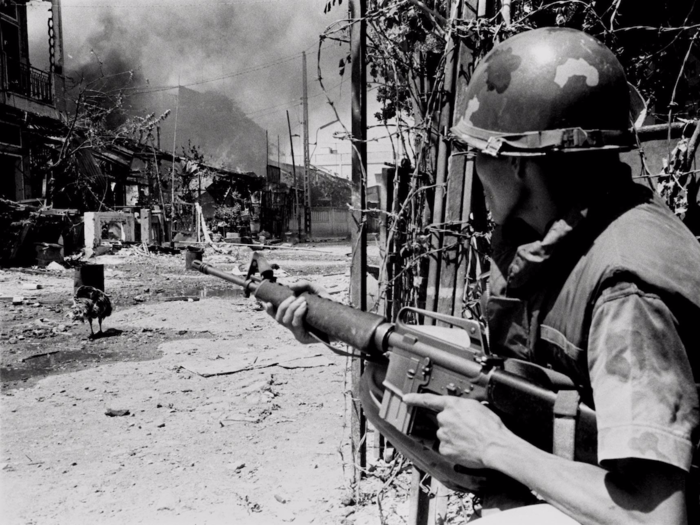
The international press was on the ground during the entire offensive, sending uncensored and raw images of the war into the houses of Americans.
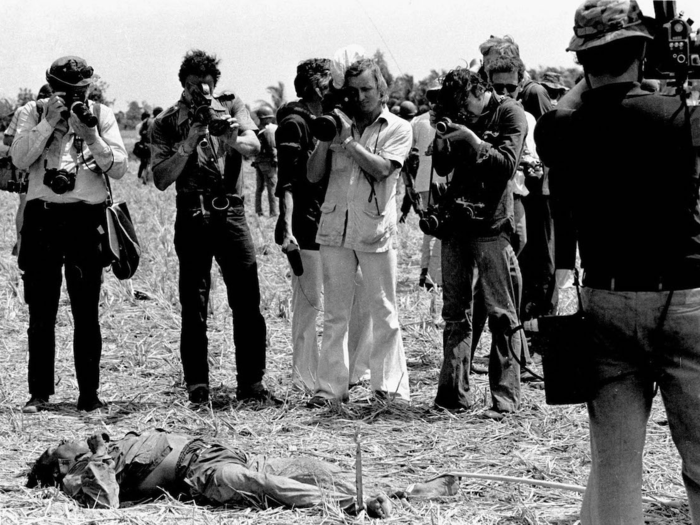
The press being on the frontlines of war was still a relatively new concept. Prior wars like WWII and Korea did not see journalists have as much access to the frontlines as they did in Vietnam.
Imaged like this execution of a Viet Cong prisoner by a South Vietnamese general shocked the public.
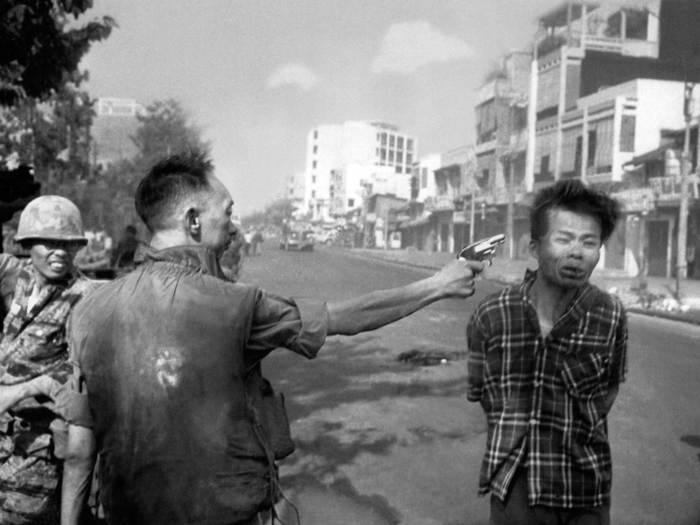
This particular Pulitzer Prize-winning image stands out as one of the defining moments of the Tet Offensive. It became a driving force for the anti-war movement in the United States.
But the image itself was more complex. The prisoner, Nguyen Van Lem had led a VC death squad, and was captured near a mass grave with 34 civilian bodies in it. Lem himself had just murdered the entire family of a ARVN soldier.
The street fighting in Saigon continued into March.
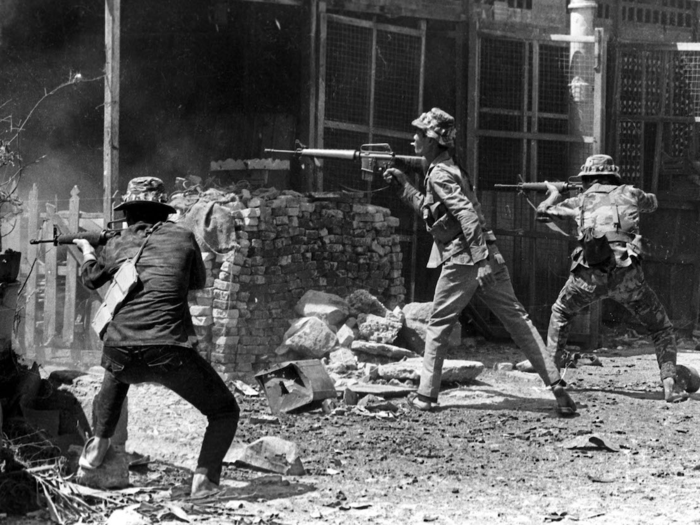
Airstrikes were called in on the cities, causing a massive amount of damage.
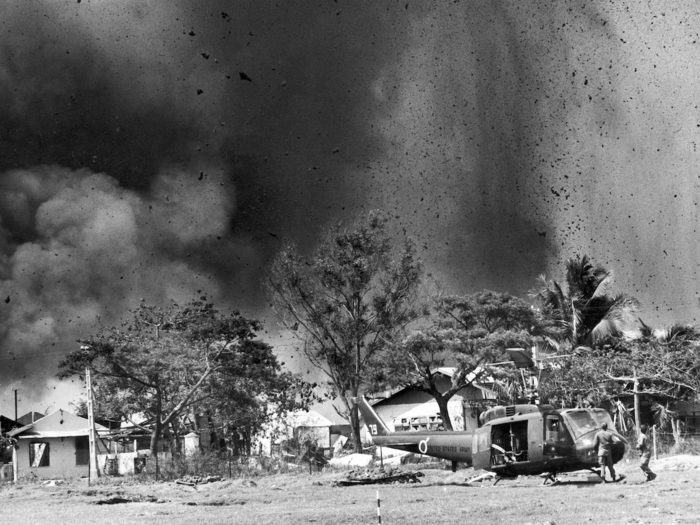
Tanks were used to support soldiers moving down streets and alleys, but they did not perform well in urban combat.
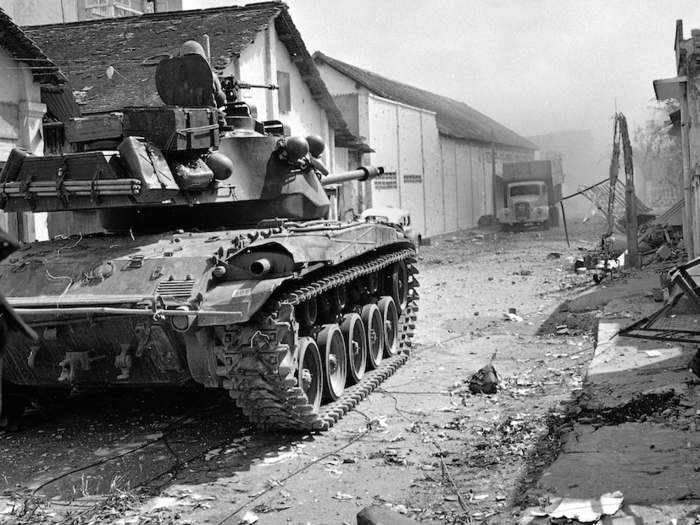
Most people thought that the Cold War would see massive tank battles like those in WWII. Instead, a lot of tanks were used in urban environments.
South Vietnamese soldiers proved essential in the battles for Hue and Saigon.
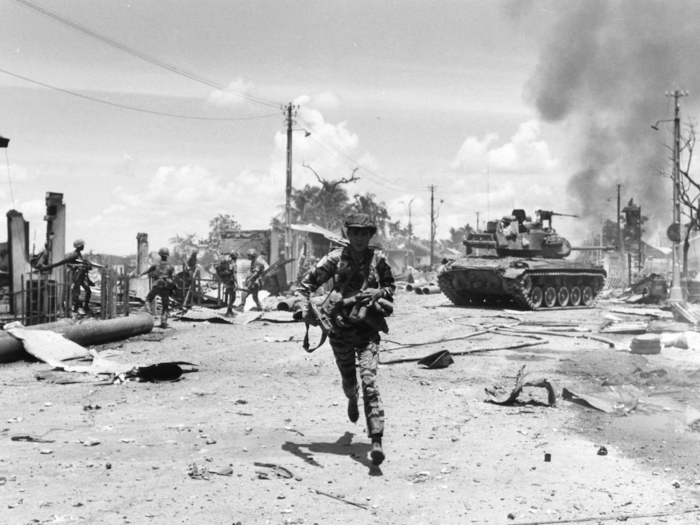
But they could not root out the enemy without American help.
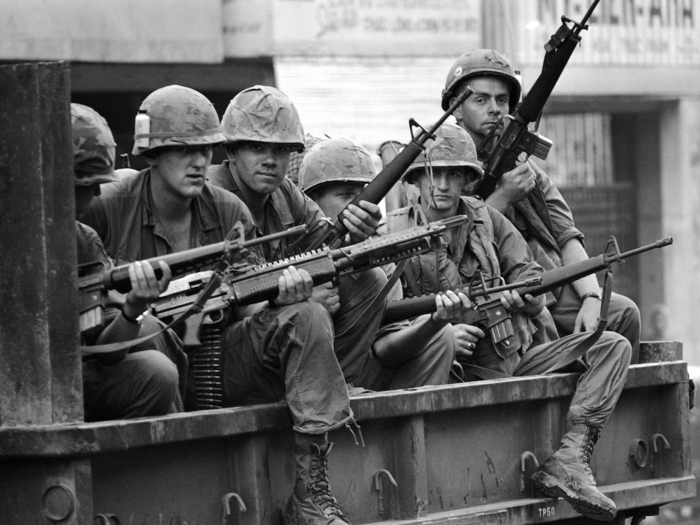
American soldiers, who were trained to fight in fields and jungles, expected to fight in places like Khe Sanh and other parts of the countryside. Instead, they poured into South Vietnam's cities.
The battles further proved the value of helicopter aircraft to transport reinforcements and wounded soldiers, as seen here.
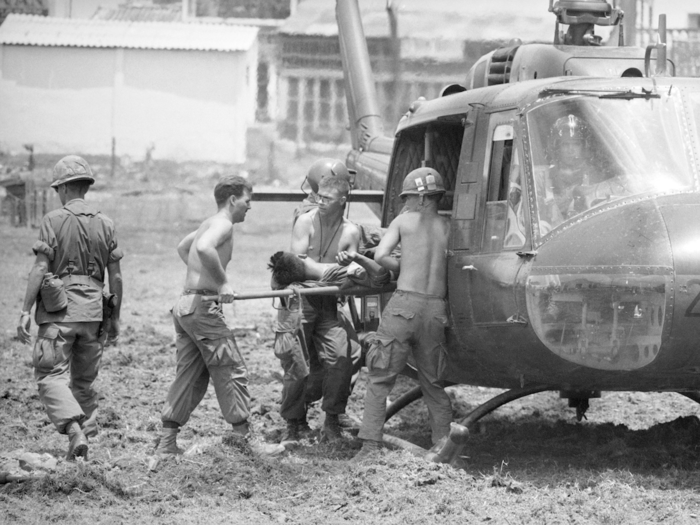
And also proved that urban combat would be central to the future of warfare.
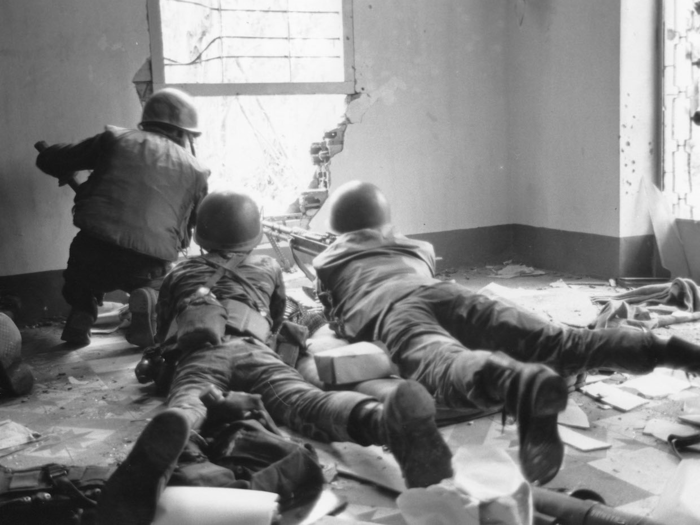
In Hue, US command had lifted a ban on airstrikes, allowing US Marines to retake the modern half of the city by the beginning of February.
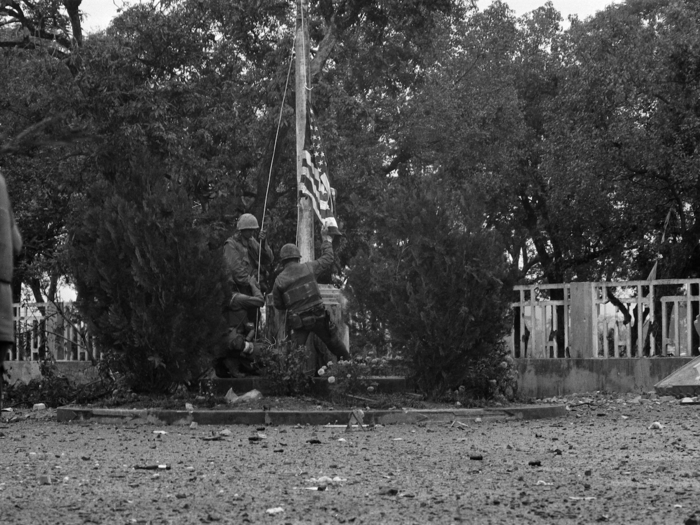
The ban was still in place when the Marines tried to take the ancient citadel, but was eventually lifted as well.
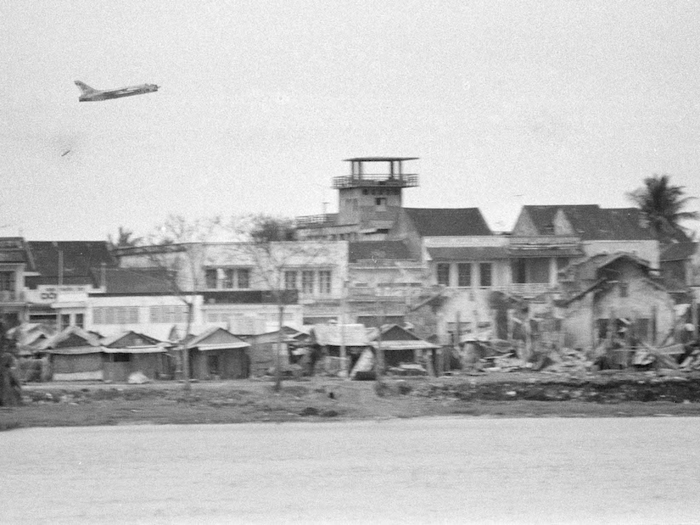
The ancient citadel, previously untouched by war, was severely damaged in many places.
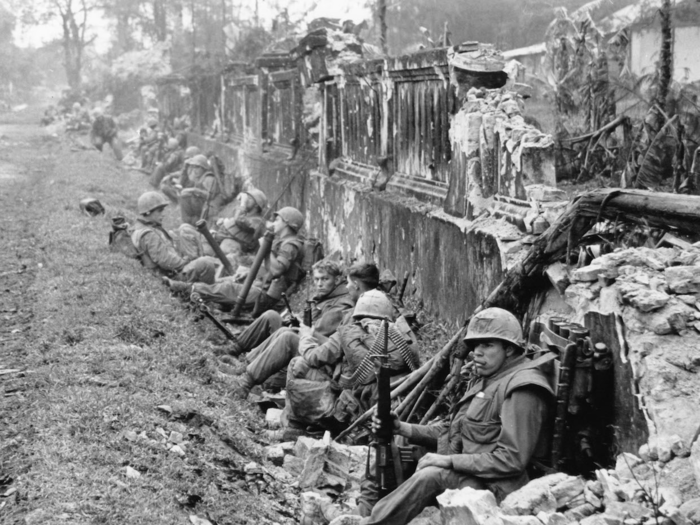
The damage was especially noticeable on the walls and ancient gates, as seen here just a year after the battle.
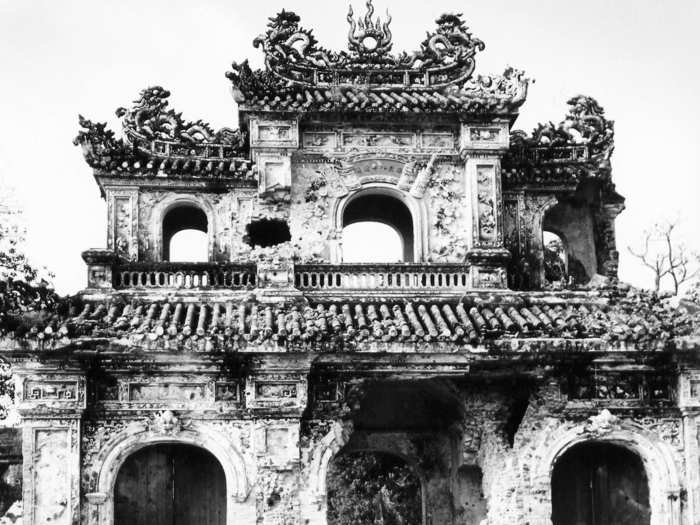
But the airstrikes proved essential, as the Citadel was finally retaken after months of fighting.
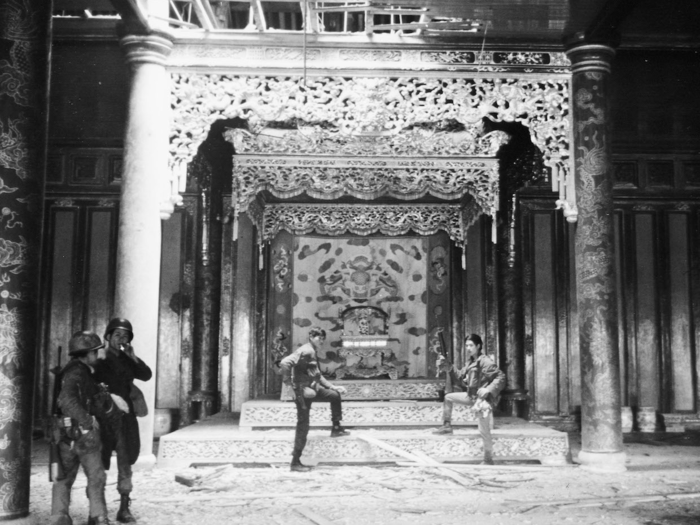
The city itself however, was largely destroyed.
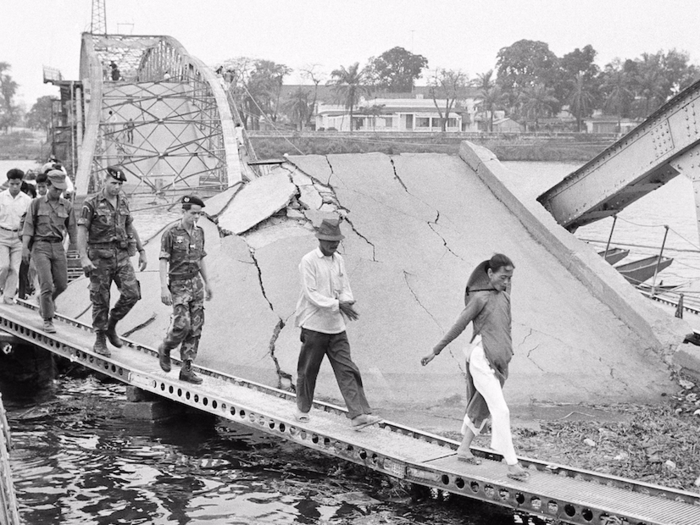
This was true of most of Vietnam's towns and cities were especially intense, as this image from Saigon shows.
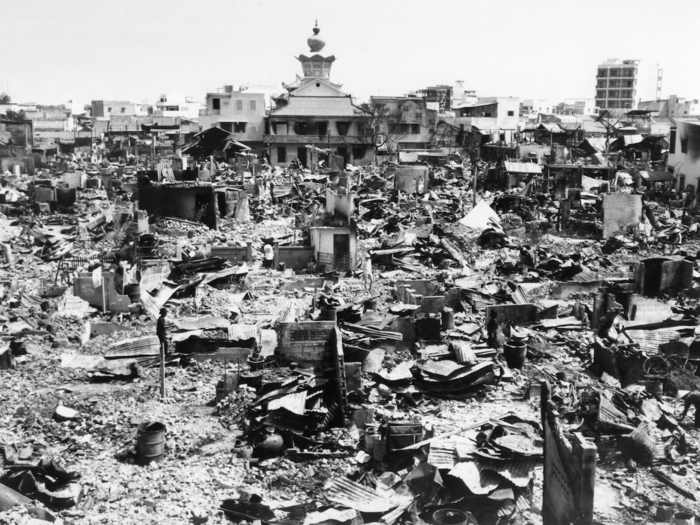
Popular Right Now
Advertisement